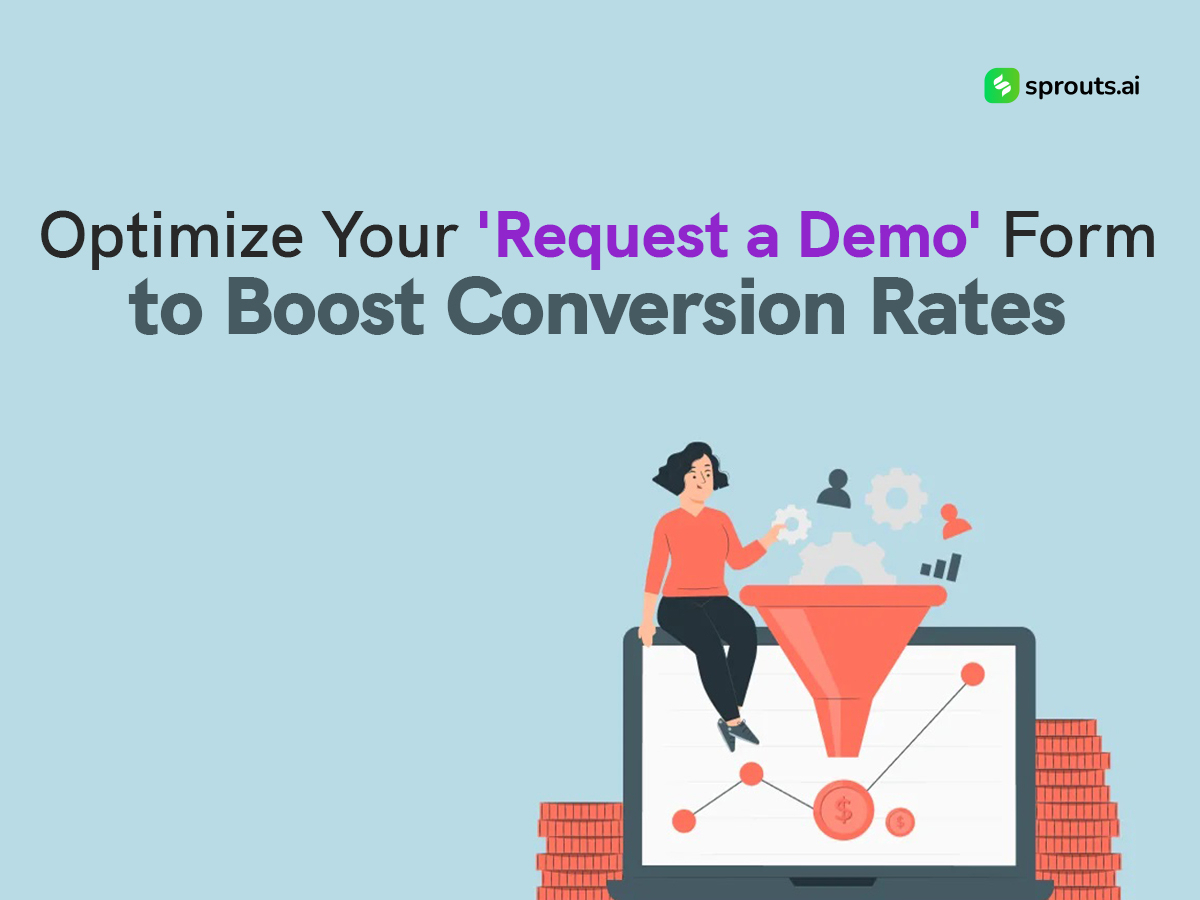Knowing how to leverage your request a demo form to increase conversions is crucial. The “Request a Demo” form is paramount for driving growth and enhancing customer interactions. By effectively leveraging this form, businesses can unlock new avenues of engagement, foster trust, and nurture long-lasting customer relationships. This blog will explore the art of harnessing the “Request a Demo” form to transform mere visitors into enthusiastic, committed customers.
1. The Gateway to Engagement
Picture the “Request a Demo” button as the welcoming gateway to a captivating journey of discovery, showing you how to leverage your request a demo form to increase conversions. As visitors navigate your website, your offerings may ignite their curiosity. A strategically positioned and aesthetically pleasing button invites them to embark on a journey that promises insights and solutions tailored to their needs. Placing the button prominently, often in the upper fold of your webpage, ensures it remains visible and easily accessible.
2. Crafting Compelling Copy
The words accompanying the “Request a Demo” button hold immense power, offering a lesson in leveraging your request a demo form to increase conversions. This is your opportunity to captivate visitors with a succinct yet compelling message. Craft copy that focuses on the unique value proposition of your product or service. Address pain points directly and offer tangible solutions. Employ persuasive language that resonates with your target audience, conveying that the “Request a Demo” form isn’t just a call to action but an invitation to overcome challenges.
3. Simplicity and Minimalism
Keep the “Request a Demo” form straightforward and free from unnecessary clutter, showcasing the wisdom of how to leverage your request a demo form to increase conversions. Including excessive fields or intricate layouts can overwhelm visitors, leading to abandoned forms. Prioritize collecting essential information, such as name, email, and company name. This streamlined approach reduces friction and encourages a higher number of form submissions.
4. Showcasing Value with Social Proof
Humans are inherently social beings influenced by the actions and experiences of others. Integrate social proof elements adjacent to your “Request a Demo” form. Incorporate testimonials from satisfied customers, present case studies that highlight successful partnerships, or showcase statistics that underscore the positive impact of your product. When visitors witness real-world examples of how others have benefited, they are more likely to take the next step.
5. Personalization: Tailoring the Experience
Personalization stands as the cornerstone of meaningful connections in the digital age. Utilize data gathered from previous interactions to create a customized “Request a Demo” experience. Address visitors by their name in the form, recommend specific features based on their browsing history, and establish a sense of individual attention. By demonstrating that you understand their unique needs, you build trust and increase the likelihood of conversion.
6. Urgency and Scarcity
The psychology of urgency and scarcity is deeply ingrained in human behavior. Harness this phenomenon by incorporating subtle cues that create a sense of urgency around requesting a demo. Emphasize time-sensitive offers, exclusive benefits available only for a limited period, or a restricted number of demo slots. This drives visitors to take prompt action instead of deferring their decision.
7. Streamlined Follow-Up Process
The journey after a visitor submits a demo request is just as crucial. A swift and efficient follow-up process is essential. Send an automated confirmation email outlining the next steps and providing a clear demo timeline. Assign a dedicated representative to each lead, ensuring they receive personalized attention and their inquiries are addressed promptly. This human touch amplifies the sense of engagement and care.
8. A/B Testing for Optimization
Continuous improvement is a cornerstone of successful conversion strategies. Employ A/B testing to explore different iterations of your “Request a Demo” form. Experiment with button placement, color schemes, variations in copy, and the number of form fields. Through meticulous data analysis, discern the elements that contribute most significantly to higher conversion rates and refine your approach accordingly.
9. Transparency Builds Trust
Trust is the bedrock upon which successful relationships are built. Be transparent about what visitors can anticipate during the demo process. Address common concerns, such as whether the demo entails any obligations to purchase or if it will be a one-on-one interaction. Proactively addressing these queries alleviates hesitations and fosters a sense of transparency that resonates with potential customers.
10. Feedback Loop: Continuous Improvement
The journey toward optimization and growth is an ongoing one. After each conducted demo, actively solicit feedback from the attendees. Inquire about the valuable aspects, and identify any pain points they encountered. These insights form the basis for refining your demo process, enhancing the overall customer experience, and showcasing your commitment to continuous improvement.
The “Request a Demo” button can transform curious visitors into enthusiastic customers through strategic placement, persuasive copywriting, personalized interactions, and cultivating trust. Remember, the journey doesn’t culminate with a demo request; it marks initiating a relationship that relies on exceptional experiences and tailored solutions. By embracing the potential of the “Request a Demo” form, businesses can embark on a transformative journey towards higher conversions and enduring customer loyalty.

